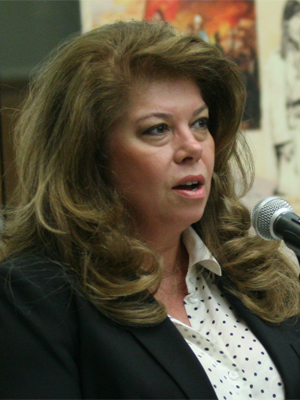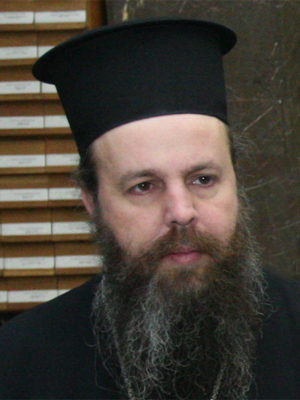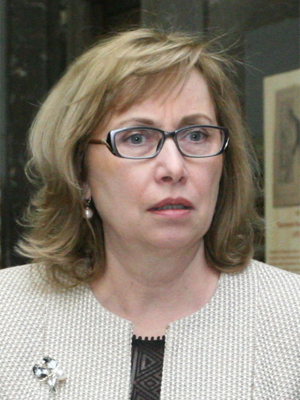This year marks the 140th anniversary since the beginning of the Kresna-Razlog Uprising in Pirin Macedonia /today the region of Blagoevgrad/. This was the first attempt of Bulgarians who had remained outside the boundaries of free Bulgaria to achieve historical justice – freedom and unity with their compatriots.
At the beginning of 1878, the Russo-Turkish War of Liberation accomplished successfully the cause for the liberation of Bulgaria. The Ottoman Empire was forced into signing the preliminary Treaty of San Stefanoby virtue of which it recognized the independence of the Bulgarian lands that were clearly defined and coincided with the boundaries of the Bulgarian Orthodox Christian Exarchate. However, at the Berlin Congress in June and July 1878, the Great Powers broke down the Bulgarian land led by their geopolitical interests. Pirin Macedonia /32,978 sq. km/ was part of the Bulgarian ethnic territory but remained unconditionally in the Ottoman Empire. In the autumn of 1878 the organization of the uprising began and on 5 October the first important battle was fought in the Kresna Gorge.

Marking the anniversary of the uprising started with an exhibition at Sts. Cyril and Methodius National Library in Sofia, a joint initiative of the Library and the Municipality of Kresna.
 „The Kresna-Razlog Uprising remains little known – undeservedly standing in the shadow of the April Uprising and the Russo-Turkish War. But it was the first act for the formation of a united Bulgarian nation”, Bulgarian Vice President Iliana Iotova said in her speech at the opening of the exhibition. And more: “It triggered more than half a century-long attempts for national unification, years of struggle, patriotism, faith and desire for freedom. Today, 140 years on, the heroes in that struggle for the triumph of justice and freedom, the brave rebel leaders like Dimitar Popgeorgiev, Stoyan Voivode, Ilyo Voivode, Gadzhal Voivode, Banyo Marinov and many others have become part of the pantheon of Bulgaria’s national heroes. Today we often hear the words written on the façade of the Bulgarian National Assembly – Unity id Strength. We should not only repeat them mechanically, but read carefully, because their true meaning takes us back to those years of the Kresna-Razlog Uprising.”
„The Kresna-Razlog Uprising remains little known – undeservedly standing in the shadow of the April Uprising and the Russo-Turkish War. But it was the first act for the formation of a united Bulgarian nation”, Bulgarian Vice President Iliana Iotova said in her speech at the opening of the exhibition. And more: “It triggered more than half a century-long attempts for national unification, years of struggle, patriotism, faith and desire for freedom. Today, 140 years on, the heroes in that struggle for the triumph of justice and freedom, the brave rebel leaders like Dimitar Popgeorgiev, Stoyan Voivode, Ilyo Voivode, Gadzhal Voivode, Banyo Marinov and many others have become part of the pantheon of Bulgaria’s national heroes. Today we often hear the words written on the façade of the Bulgarian National Assembly – Unity id Strength. We should not only repeat them mechanically, but read carefully, because their true meaning takes us back to those years of the Kresna-Razlog Uprising.”
Orthodox priests in Pirin Macedonia were very active during the uprising. His Eminence the Nevrokop Metropolitan Seraphim said more about that in his speech:
 „As the exhibition shows, key organizers of this uprising were priests from the Bulgarian eparches in Macedonia. With their ardent spirit they urged the people to self-sacrifice and to a display of the true Christian love aimed to serve our fellows. Therefore I hail everybody who has worked to revive the memory of the sacrificial patriotic act that the Kresna-Razlog Uprising was.”
„As the exhibition shows, key organizers of this uprising were priests from the Bulgarian eparches in Macedonia. With their ardent spirit they urged the people to self-sacrifice and to a display of the true Christian love aimed to serve our fellows. Therefore I hail everybody who has worked to revive the memory of the sacrificial patriotic act that the Kresna-Razlog Uprising was.”
The Mayor of the Municipality of Kresna Nikolay Georgiev thanked for the cooperation for the organization of the exhibition: „The Municipality of Kresna is not big, and has lower financial resources than medium and large municipalities in the country. That is why we are very grateful and touched by what the colleagues from the National Library did. They joined us actively in the work to prepare this exhibition. They deserve a deep bow of respect for their patriotism”.
140 years ago the population of Pirin Macedonia was not numerous but its armed detachments put up tough resistance to the forces of the huge Empire for more than 6 months.
 „It is not accidental that the uprising has been defined as the highest point in the resistance of Macedonian Bulgarians against the resolutions of the Berlin Congress”, said Krassimira Alexandrova, Director of the National Library. “Although it failed, the uprising was a prelude to the epic struggle of the Macedonian Bulgarians led by the Internal Macedonian-Edirne Organization for national liberation and accession to free Europe. It was one of the longest-running undertakings of the armed national-liberation movement – it was on from October 1878 till May 1879.”
„It is not accidental that the uprising has been defined as the highest point in the resistance of Macedonian Bulgarians against the resolutions of the Berlin Congress”, said Krassimira Alexandrova, Director of the National Library. “Although it failed, the uprising was a prelude to the epic struggle of the Macedonian Bulgarians led by the Internal Macedonian-Edirne Organization for national liberation and accession to free Europe. It was one of the longest-running undertakings of the armed national-liberation movement – it was on from October 1878 till May 1879.”
The Kresna-Razlog Uprisingwas undoubtedly inspired by the creation of a free Bulgarian state in the Principality of Bulgaria (today Northern Bulgaria and the Sofia region). Bulgarians in Pirin Macedonia were aware that a Bulgaria aligned with the spirit of European traditions and the regard of human rights was being created to the north of them. Freedom for Pirin Macedonia would come33 years later as a result of the heroic Balkan War when the Bulgarian nation would once again amaze Europe and the world with its exceptional bravery.
English Daniela Konstantinova
Photos: BGNESExactly a year ago, the Bulgarian Orthodox Church established a new holiday in the church calendar - the Glorification of the holy relics of Saint Euthymius, Patriarch of T a rnovo . According to church sources, the last..
They call Nikopol “the town of ages” because its history goes back thousands of years. It was founded as a settlement in the year 169 during the reign of Roman Emperor Marcus Aurelius. In 629, theByzantine Emperor renamed the town to Nicopolis, meaning..
There are rumours and speculations that some forgeries, so good that they are not inferior to the originals, could be found among the exhibits in the museums, but at the moment a whole series of forgeries can be seen at an exhibition..
105 years ago, on November 27, 1919, a treaty was signed in the Parisian suburb of Neuilly-sur-Seine, officially ending Bulgaria's..

+359 2 9336 661
